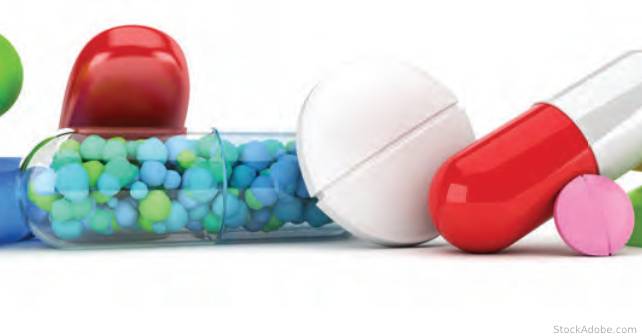
Renal patients are at high risk for drug interactions owing to impaired clearance of some drugs and their tendency to be on multiple medication for their comorbidities. There are two specific drug-related scenarios in the patient with renal disease for emergency physicians to be aware of: hyperkalemia, and dose adjustments for drugs that are renally excreted. Many drugs can pre-dispose to hyperkalemia, including angiotensin-converting-enzyme inhibitors, angiotensin receptor blockers, spironolactone, trimethoprim-sulfamethoxazole, heparin, and NSAIDs. The risk of hyperkalemia increases when these medications are combined in renal patients who have a decreased ability to eliminate potassium. A particularly concerning drug interaction is trimethoprim-sulfamethoxazole in combination with spironolactone, which clearly increases the risk for hyperkalemia and sudden cardiac death.20 When it comes to impaired drug elimination direct oral anticoagulants, colchicine, and digoxin are particularly important and require dose or interval adjustment in renal patients.21
Explore This Issue
ACEP Now: Vol 43 – No 01 – January 2024Three Categories of Drugs Are Commonly Involved in Drug Interactions
Three categories of drugs prescribed commonly in EDs carry significant potentially dangerous drug interactions: antimicrobials, analgesics, and cardiovascular drugs. Aside from the trimethoprim-spironolactone interaction mentioned above, trimethoprim-sulfamethoxazole also interacts with warfarin to cause supratherapeutic international normalized ratio values and increased bleeding risk, and with angiotensin-converting-enzyme inhibitors or angiotensin receptor blockers to cause hyperkalemia.22,23 Macrolides are another group of antibiotics to be careful prescribing. Clarithromycin or erythromycin when combined with lipophilic statins such as atorvastatin, lovastatin, or simvastatin, increases the concentration of the statin, thus increasing the risk for rhabdomyolysis.24 Erythromycin or clarithromycin in combination with amlodipine can lead to clinically significant hypotension.25 When choosing a macrolide, azithromycin is generally considered the safest with regard to drug interactions.
Analgesics are another important category of drugs when it comes to drug interactions. Opioids in combination with any sedating medication should be avoided whenever possible. A less well recognized drug interaction in this category includes nonsteroidal antiinflammatory drugs in combination with acetylsalicylic acid, leading to a higher risk of arterial thrombosis.26
The third category of drugs that are often involved in drug interactions are cardiovascular drugs. Important underrecognized interactions for emergency physicians include: warfarin plus acetaminophen increasing international normalized ratio and bleeding, beta-blockers plus cholinesterase inhibitors causing bradycardia and syncope, and insulin plus beta-blockers leading to hypoglycemia.27-29
Next time you are faced with a patient presenting with syncope or altered level of awareness, or you are considering prescribing antibiotics, analgesics, or cardiovascular drugs in the ED, consider these potentially life-threatening drug interactions–you may pick up an iatrogenic cause or narrowly avert an iatrogenic disaster!
Pages: 1 2 3 4 | Single Page





No Responses to “These Patients and Drugs are Commonly Involved in Drug Interactions”